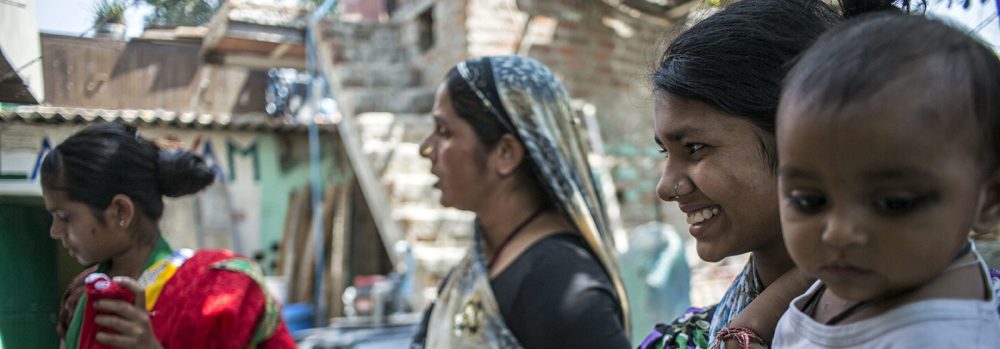The largest remote learning experiment in history has taught us many lessons, among them the need to embrace change and apply our new understanding of the benefits of blended learning to foster a more equitable future, writes Niamh O’Reilly

Urgent calls to return to on-site learning neglect the potential of blended learning to increase and widen access. While education systems are notoriously resistant to change, the COVID-19 pandemic, almost overnight, forced a seismic shift to remote learning across further and higher education. This change brought issues of educational inequality into sharp focus; those with resources and skills had an advantage in taking the step into uncharted digital learning territory. Marginalized learners, meanwhile, faced not only existing obstacles stemming from structural inequalities but also new challenges arising from online learning.
Yet, emerging data from Ireland’s National Further Education and Training (FET) Learner Forum suggest that thanks to Irish state investment in addressing digital poverty, support needs and improved pedagogy, many marginalized learners now want a future in which blended learning, a mix of both online and in-person learning, is prevalent. Given the scale of the impact of COVID-19 on existing educational disadvantage, it is prudent to pause and take stock, lest we waste the insights gained from this global online learning experiment. At this pivotal point, we must grasp the opportunity to create a more equitable education system by building on lessons from those who experienced this monumental change, the learners. Carving out a new, diverse, more inclusive landscape is possible if the education system is open to learning.
The late Sir Ken Robinson argued that the current industrial model of education is redundant, unfit for the needs of all learners. Despite progress, enduring features, including the predominance of the classroom model coupled with persistent educational inequality, signal a need for change. Indeed, the education system has always benefited the powerful in society; a trend exacerbated by the pandemic’s disproportionate impact on marginalized learners, as reported by the Organisation for Economic Co-operation and Development (OECD, 2020). We have seen this in Ireland, where statistics reveal a drop in further education participation levels of approximately 25 per cent by Travellers and a drop of 15 per cent for people with disabilities during 2020. Hard-earned gains to increase access to education are being lost.
However, there is an opportunity to turn the tide. We are no longer operating in an emergency remote-learning context. One year on, educator ingenuity and learner resilience moved the dial for online learning to play a greater part in furthering educational inclusion.
Recent debate rightly focused on the equality challenges of remote learning. But the emerging picture is more nuanced; blended learning is welcomed by learners, many of whom have long struggled with access to education. For example, the autonomy that recorded, close-captioned lectures can afford people with disabilities is compelling. Speaking at a recent online conference, leading disability rights campaigner Dr Vivian Rath expressed frustration that, despite years of disability-rights advocacy, it took a pandemic for blended learning, long deemed impossible, to be implemented. As with the implementation of universal design, blended learning can benefit all learners, including for whom societal barriers such as a lack of transport or childcare pose significant challenges.
Learner-centred research also recommends maintaining the positive aspects of learning during COVID-19. Although public health restrictions were limiting, the AONTAS-led Irish National FET Learner Forum project reveals that, during the 2020-21 academic year, 17 per cent of learners engaged with blended learning. With the improved capacity of educators and learners to engage in online learning, coupled with IT devices and internet access, many benefits could address long-standing access issues, such as flexibility and convenience. Additionally, the blended approach mitigates the oft-cited challenge of online learning – the social element. The in-person aspect fosters a feeling of belonging, vital for learner retention and, indeed, happiness. Access to on-site learning initiates and maintains necessary educator and peer connections, particularly important for nervous learners who left school early. As enthusiastically noted by one adult learner: ‘I feel I have the best of both worlds by doing blended [learning] both at home and in school’.
Blended learning is by no means the cure for the complex issue of educational inequality; it is but one tool. There are inherent issues due to the irreplaceable aspects of human interaction. Limited community engagement makes it difficult to attract hard-to-reach groups, such as those experiencing homelessness, literacy or mental health challenges, coupled with isolation. The online learning aspect is not for everyone, as one FET learner reflected: ‘I am sometimes the only person with their camera on in the class. So it’s been a lonely year.’
As we emerge from the pandemic, learners should shape how we open the doors to our new world of education. A hasty return to the old system would be unwise. The days of predefining the educational needs of the masses, in ways steeped in inherent prejudices that perpetuate an inequitable system, must end. We cannot go backwards; a blend is needed.
Learning is uncomfortable. Through learning, we challenge our frame of reference and our way of seeing the world, opening ourselves up to growth and transformation. With CONFINTEA VII approaching, we have an ideal opportunity to reflect on the impact of the pandemic and the valuable learning we gained as we work towards creating an adult education system fit for all.
Niamh O’Reilly is CEO of AONTAS, the National Adult Learning Organisation in Ireland
